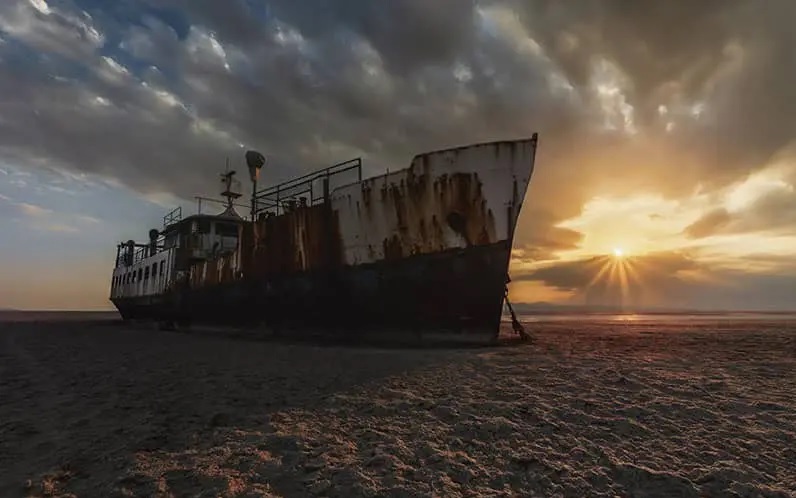The Last Drops of Urmia Lake
According to the official statistics, more than 98% of Urmia Lake is dried out and due to a severe wave of heat soon and without any rainfall speculations, it is predicted that this August, the last drops of this lake vapor in the air and it gets completely dry in its history of existence.
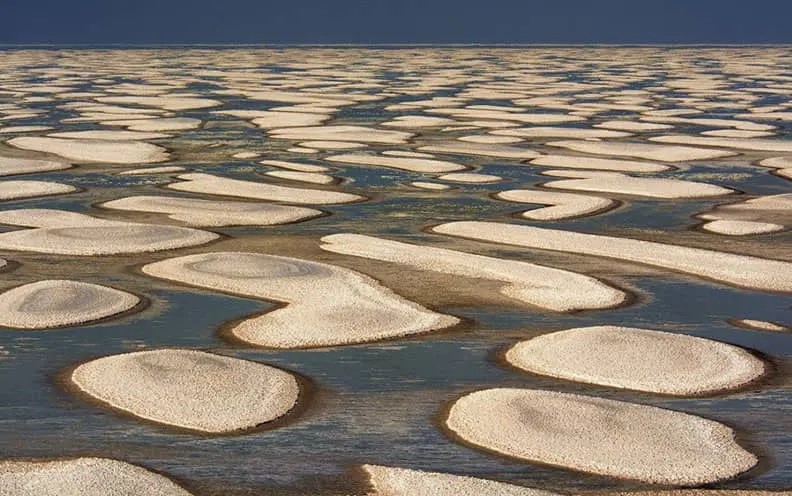
Urmia Lake Introduction
Urmia Lake that is located in the northern parts of the East part of Kurdistan and between the two provinces of Urmia and Tabriz (the East Azerbaijan Province), was the second biggest salty lake in the world, the biggest lake in Kurdistan and the Middle East until fifty years ago when it began to get smaller gradually due to drought.
This lake with its 102 islands in it was the living habitat for many kinds of birds such as flamingo, pelican, stork, geese, …. It was also the main habitat of a little living organ called Artemia which is a rare kind of creature living only in salty water and it is very important for fish and shrimp production.
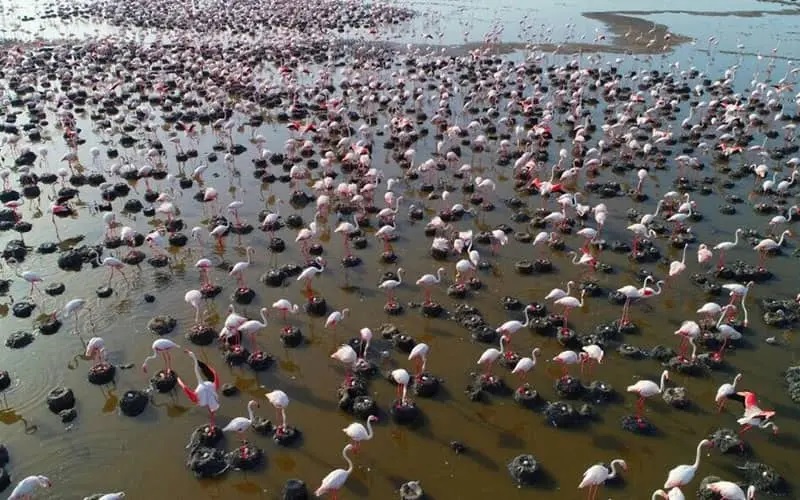
Before this lake drys out, more than 60 rivers were flowing into it, the main rivers among them were Tatahou, Jakhatou, Barandouz, Gadar, Shahrchay, Nazlou, and …. Since there were salt sources around this lake, the salt would wash down towards the lake by the rivers' flows so the lake was too salty. This quality made the lake a safe place for people to swim in because they would not drown in it, and they would simply float on the water.
Due to the importance of Urmia Lake and the existence of 53 kinds of animals and 115 kinds of birds living around it and on its islands, this region was chosen to be a preserved area in 1967 and in 1976 it was selected by UNESCO as one of the 59 special habitats for animals and birds and a National Park in the world.
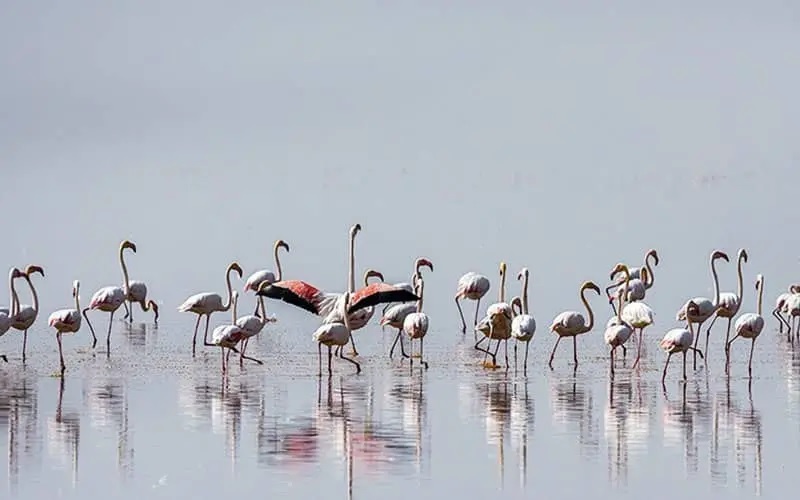
The Area of Urmia Lake and the Amount of Water
In 1998 before Urmia Lake began to dry out, it was as long as 140 kilometers and the widest part of it was 55 kilometers. The deepest spot of this lake was 16 meters. In that year, the area of this lake was 5400 square kilometers and the amount of water was more than 32 billion cubic meters. It was the 25th largest lake in the world at that time.
However, since 1999, due to several distinct reasons the lake's water decreased and each year it shrank thus the lake's area decreased. Finally, in 2023 summer the lake's area reached 400 square kilometers and the amount of water was less than one billion cubic meters.

The Reasons for Urmia Lake Drying Out
In the past twenty years, drought and insufficient amounts of snow and rainfall have become a phenomenon that has involved this region and many other regions in the world. However, experts believe that drought is not the reason for Urmia Lake to dry out and what has happened to this lake is because of some other main reasons that involve people, authorities, and the Islamic Republic of Iran's government.
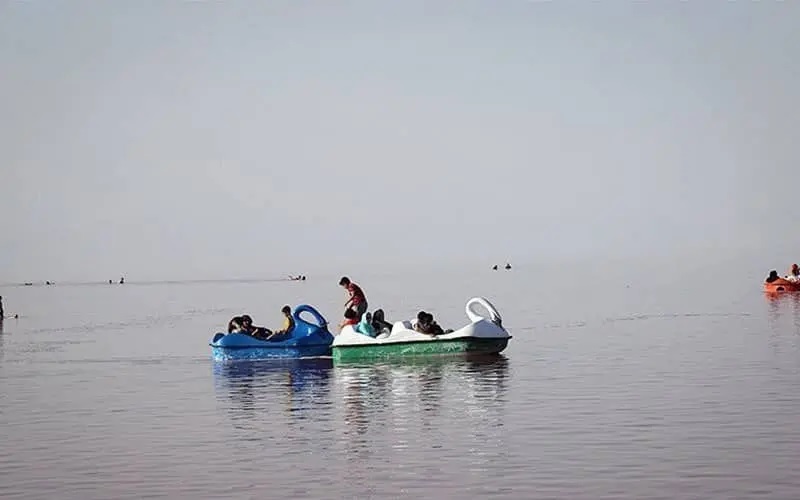
The Main Reason for Urmia Lake to Dry Out are:
Agriculture and Digging Many Illegal Wells
After the eight-year war between Iran and Iraq, the Islamic Republic of Iran began the independence policy in the food industry and the surrounding areas around Urmia Lake was one of those regions that became very important since it possessed fertile lands. The local people and farmers were encouraged by the government to increase their agricultural products. According to the governor of Urmia Province, during the past twenty years, the area of the surrounding farms has increased three times more than before. In addition to this increase in farm lands, transferring rainfed farming into irrigation agriculture, and encouraging the farmers to cultivate those products that need a lot of water like beet, and apple on the other hand led to consuming 2 billion cubic meters of water more than the previous years. Based on the official statistics, agriculture consumes more than 90% of the water that must flow into Urmia Lake.
According to the official statistics, right now there are 3 thousand legal wells and more than 120 thousand illegal wells dug around Urmia Lake. These wells drain the underground water for agricultural purposes. As a result of this, the salty water of the lake will penetrate the underneath layers of the ground which will end in turning the underground waters into salty water.

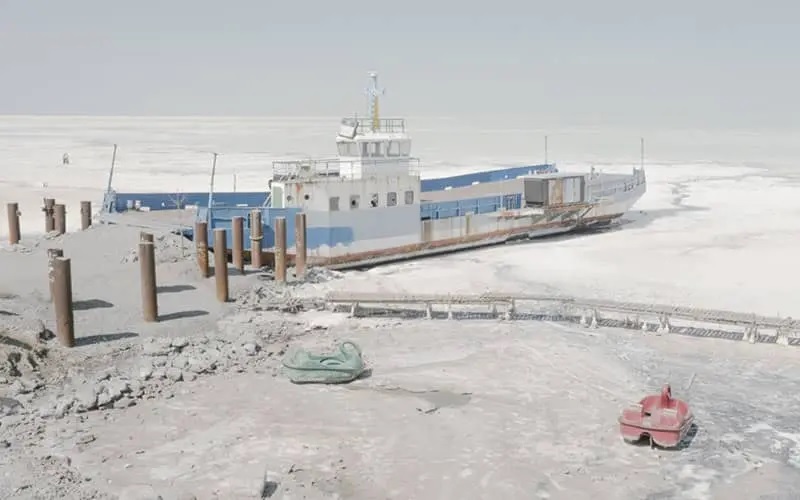
Building Dams Over the Rivers
In the past years, more than one hundred dams have been built over those rivers that flow into the lake. These dams will prevent the rivers' water from flowing into Urmia Lake. As a result, these dams will cause the water to vapor more easily thus, the lake will not gain enough water.
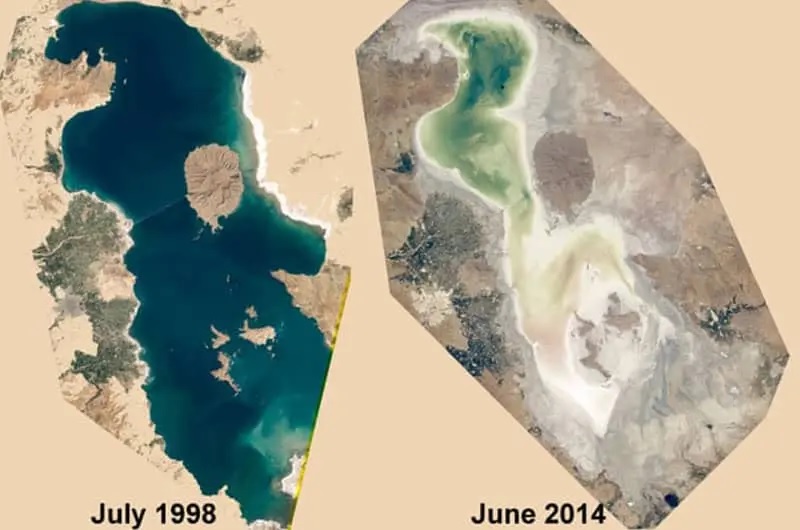
Transferring Water
Another reason for Urmia Lake to dry out is that the rivers that are flowing into it are being transferred to other places for different purposes. The Jakhatou River which comes from the Chil Chama mountains in Sna Province was the main source of Urmia Lake. However, building two large dams on this river and keeping the water for agriculture purposes in the original area on the one hand, and transferring the water behind the dams by two large tubes to Tabriz Province (East Azerbaijan) on the other hand prevented this river to reach Urmia Lake. The water transferred to Tabriz Province provides water for drinking, agriculture, and industry purposes for Bonab, Malekan, Maraghe, Azarshahr, and Tabriz cities.

Building Urmia-Tabriz Road in the Middle of Urmia Lake
In order to make a closer route from Urmia to Tabriz, a road was built on a part of the lake whose width is the least. This road is built without having the standard points. The road is built by pouring thousands of tons of stone and sand into the lake dividing the lake into two parts north and south. In the middle of the lake, a 1250-meter bridge is built for transportation between the north and south parts of the lake. Those who built this bridge did not pay attention to the point that the water was circulating on the banks of this lake. On the west bank of the lake, the water was circulating from the south to the north, and on the east bank, it was circulating from north to the south, thus the water was always circulating (counterclockwise). This circulation helped the water to keep its temperature balanced and it prevented the water from vaporizing. After building this road, the water circulation stopped and it was kept still on the north and south part of it. This led to the vaporization of the water and was one of the significant reasons for the lake drying out.
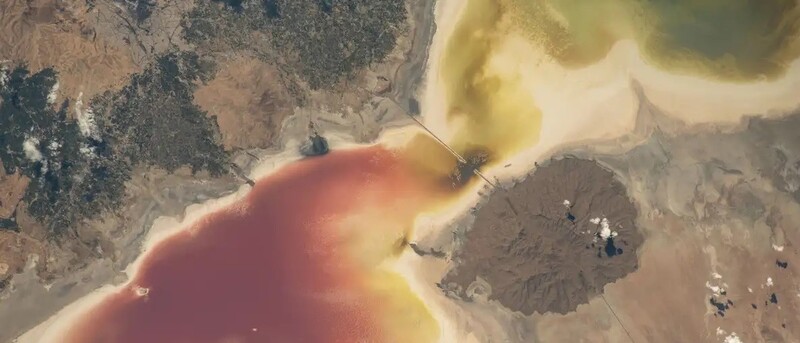
The Threats of Urmia Lake Drying out
If this lake goes dry completely, the surrounding areas of this lake will face climate change, turning into hot deserts. Wind blows will transferer millions of tons of salt that exists in this lake and it will cause salt storms. This event will make most of the agricultural lands in the East part of Kurdistan and Azerbaijan, the North and South parts of Kurdistan to dry and turn into salty lands which will destroy farming in those areas.
The chemical and toxic elements remaining from industrial activities and the chemical manure being washed off of the area and poured into the lake by the rivers will be mixed with the salt storms and will be spread all over the surrounding areas causing many kinds of chronical diseases among the people, death will increase and breeding will decrease.
Generally, this lake drought will affect 15 million people's lives in a long period of time, and according to the predictions at least 13 million people will have to abandon their towns and cities. This will change the demography of this region.
The effects of the Urmia Lake drought not only are harmful to the North, South, and East parts of Kurdistan, but it also is very threatening to Azerbaijan Republic, Armenia and Azerbaijan, Qazwin and Ardebil Provinces in Iran, too.


